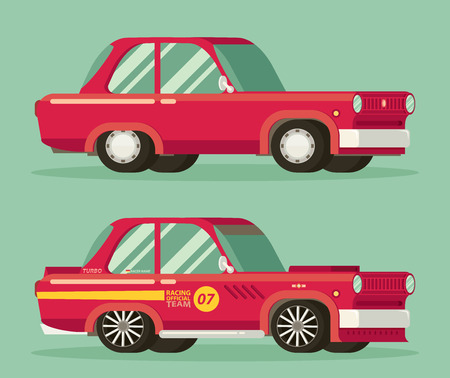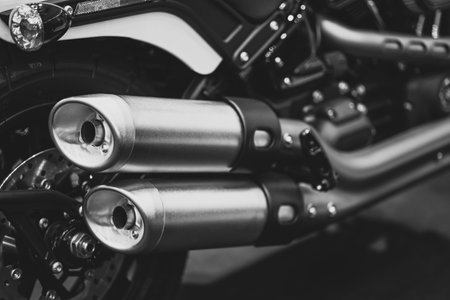What is a Limited-Slip Differential?
If you’ve ever admired the way classic American muscle cars hug the road or how rugged pickups tackle slick backroads, you’ve got the differential to thank. But not all differentials are created equal. The limited-slip differential (LSD) stands out as a timeless piece of automotive craftsmanship, engineered to deliver superior traction and control compared to its open or locking cousins. At its core, a limited-slip differential is designed to distribute engine power between the drive wheels more intelligently. Unlike an open differential—which freely allows wheels to spin at different speeds but can leave one wheel hopelessly spinning on ice or gravel—the LSD uses mechanical magic like clutch packs or gears to sense when one wheel loses grip and smoothly transfers more torque to the wheel that still has traction. This means you’re less likely to get stuck or lose control, whether you’re powering through a rain-soaked curve in your vintage Camaro or crawling up a rocky trail in your trusty old Jeep. On the other hand, while locking differentials can force both wheels to turn at the same speed for maximum grip off-road, they tend to make street driving awkward and unpredictable. The LSD strikes a golden balance: it preserves everyday drivability while providing that extra edge when conditions demand it. It’s a testament to classic American engineering—built for those who love the road, respect tradition, and crave confident performance behind the wheel.
2. Why Traction Matters: Everyday Scenarios
Traction isn’t just a buzzword for gearheads—it’s the unsung hero in everyday American driving. Whether you’re navigating a rain-soaked interstate, pulling out of a gravel driveway in the heartland, or hugging curves on a winding mountain highway, maintaining grip between your tires and the road is what keeps you safe and in control. Let’s break down some familiar scenarios where traction can make or break your daily drive.
Common Traction Challenges for U.S. Drivers
| Scenario | Traction Challenge | Potential Risk |
|---|---|---|
| Rainy Highways | Hydroplaning, slick pavement | Loss of steering control, longer stopping distances |
| Gravel Driveways | Loose surface, uneven grip | Tire spin, difficulty accelerating or climbing grades |
| Winding Country Roads | Sharp curves, varying surfaces | Oversteer, understeer, skidding off the road |
The All-American Rainstorm Commute
Picture yourself commuting home after a long day—dark clouds roll in and suddenly you’re hit with a Midwest downpour. Puddles form, and your tires are fighting to stay connected to the asphalt. This is where a limited-slip differential (LSD) quietly steps up, distributing power where it’s needed most so you don’t lose momentum or control.
Kicking Up Dust on Gravel Roads
For many Americans living outside city limits, gravel roads are a fact of life. When one tire slips on loose stones while the other finds firmer ground, an LSD helps transfer torque to keep both wheels moving forward together—no more embarrassing moments stuck spinning your wheels in front of the neighbors.
Cruising America’s Scenic Byways
The iconic American road trip isn’t always smooth sailing; tight corners and unpredictable surfaces test your car’s grip around every bend. An LSD enhances cornering stability by balancing power side-to-side, giving you the confidence to enjoy those legendary drives without white-knuckle stress.
The Takeaway: Real-World Benefits Every Day
No matter where you call home—from rainy Pacific Northwest highways to the dusty backroads of Texas—a limited-slip differential delivers peace of mind when traction is at its most precious. It’s classic engineering that makes modern driving safer and more enjoyable for everyone behind the wheel.

3. How LSDs Improve Control and Performance
Limited-slip differentials (LSDs) are the unsung heroes that help drivers keep their cool when the going gets rough—whether youre lighting up Main Street in a classic muscle car or hauling gear in a hardworking pickup. At their core, LSDs are all about keeping your wheels planted and your ride predictable, even when road conditions want to throw you a curveball.
The Secret Sauce: Balanced Power Delivery
What makes an LSD special is its ability to balance power between your drive wheels. Instead of letting one tire spin uselessly on gravel or ice, an LSD steps in and channels more torque to the wheel with grip. That means less wasted energy, more forward motion, and way more confidence behind the wheel.
Cornering Confidence
When you dive into a corner—be it on a sunbaked back road or a twisty mountain pass—an LSD helps distribute power so both wheels can dig in. This keeps your car stable, reduces understeer or oversteer, and lets you put down power smoothly as you exit the bend. It’s a difference you can feel, especially when pushing a V8 coupe or hustling a loaded pickup around tight turns.
Tough Road? No Problem
From rain-slicked highways to muddy job sites, LSDs shine where open differentials falter. When one wheel starts to slip, the LSD limits the loss of traction and keeps your rig moving forward. For truck owners towing heavy loads or off-roading enthusiasts crawling through ruts and rocks, this means fewer stalls and more control no matter what Mother Nature throws your way.
Classic Engineering, Modern Muscle
LSDs aren’t just for race cars—they’re baked into American automotive culture, from vintage Camaros to modern F-150s. Their blend of classic mechanical engineering and real-world practicality helps every driver get more out of their machine when it matters most.
4. Types of Limited-Slip Differentials
When it comes to limited-slip differentials (LSDs), American gearheads know there’s no one-size-fits-all solution. Each type reflects a unique chapter in the ongoing story of classic car culture and engineering prowess. Let’s pop the hood and take a closer look at three iconic LSD designs—clutch-type, cone-type, and helical gear LSDs—and see how each captures America’s spirit for tough, reliable performance.
Clutch-Type LSDs: The Classic Workhorse
The clutch-type LSD is what many old-school muscle cars and vintage pickups were built around. This design uses a stack of clutches to transfer power between wheels when slip is detected. Rugged, straightforward, and dependable, it suits drivers who crave that raw, mechanical connection with their ride. Its predictable engagement has made it a staple in American drag racing and hot rod scenes for generations.
Cone-Type LSDs: Smoother Engagement
For those who appreciate a bit more refinement without sacrificing strength, cone-type LSDs step up to the plate. Instead of flat clutches, these use cone-shaped friction surfaces to manage torque distribution. The result? Smoother transitions and quieter operation—perfect for classic cruisers or trucks that need to handle both street and off-road duties with grace. Cone-types are a testament to American ingenuity: simple upgrades making everyday driving just that much better.
Helical Gear LSDs: Modern Precision
Modern muscle meets advanced engineering with helical gear LSDs, like those found in today’s performance cars and sports sedans. Rather than relying on friction plates, these units use spiral-cut gears to dynamically shift power where it’s needed most—no clutches required. They offer precise handling and maintenance-free operation, fitting right in with America’s push toward high-tech performance wrapped in timeless style.
LSD Comparison Table
| LSD Type | Main Mechanism | Best For | Classic Appeal |
|---|---|---|---|
| Clutch-Type | Friction Clutches | Drag Racing, Muscle Cars | High—vintage mechanical feel |
| Cone-Type | Cone Friction Surfaces | Cruisers, Trucks | Medium—refined yet strong |
| Helical Gear | Spiral Gears | Modern Performance Cars | Low—modern precision focus |
A Legacy Built on Choice and Character
No matter which type you find under your car’s rear end, each LSD tells its own story about America’s love affair with tough engineering and road-hugging control. From the gritty feel of clutch plates locking up at the drag strip to the whisper-quiet grip of modern helical gears on winding mountain roads, limited-slip differentials keep classic performance alive—and always ready for the next adventure.
5. Maintenance and Common Issues
If you grew up with a wrench in your hand and grease under your fingernails, you know that keeping your limited-slip differential (LSD) in top shape is part science, part tradition. Let’s get back to basics—just like Dad showed us out in the driveway on a Saturday morning.
Old-School Garage Wisdom: Routine LSD Care
First things first: regular fluid checks are non-negotiable. The special gear oil inside your LSD keeps those clutch packs or gears meshing smoothly, so always use the manufacturer-recommended lubricant. Change it as often as your owner’s manual suggests—or sooner if you’re putting down some serious miles or towing heavy loads. Don’t skimp; good oil saves you headaches down the road.
Spotting Trouble Before It Starts
Listen for telltale signs of wear: unusual noises like whining or grinding, jerky handling around corners, or even one wheel spinning when both should grip. These are red flags that something’s off inside your diff. If you spot oil leaks near the axle seals or smell burnt fluid, it’s time to roll up your sleeves and investigate further.
Keeping Your LSD Running Smooth
Sometimes all your LSD needs is a little TLC—tighten loose bolts, replace worn gaskets, and make sure vent tubes aren’t clogged. If you notice shuddering or slipping during turns, don’t ignore it! It could mean the clutch packs are worn out and need replacing. A stitch in time saves nine, just like the old-timers say.
When to Call in the Pros
While basic maintenance is a satisfying DIY project, rebuilding an LSD takes precision tools and know-how. If you’re not confident tackling big repairs, don’t hesitate to visit a trusted mechanic—ideally one who appreciates classic American iron and knows his way around these timeless driveline components.
Treat your limited-slip differential with respect and a touch of nostalgia, and it’ll return the favor mile after mile—keeping you planted on the road and connecting you to a proud legacy of garage-born craftsmanship.
6. Are LSDs Worth It? The Enthusiast’s Perspective
If you’ve ever swapped stories at a weekend car meet or spent time wrenching in the garage, you know the debate about limited-slip differentials (LSDs) is as classic as American muscle itself. Whether you’re cruising Main Street, braving rush hour, or chasing lap times at your local track, the question lingers: Is an LSD really worth it?
Street Cruisers: Enjoyment on Every Corner
For those who love to take their pride and joy out for a spin—maybe a vintage Camaro or a well-kept Mustang—the appeal of an LSD is undeniable. Enthusiasts report smoother power delivery and more confident handling when carving through winding backroads or making spirited exits from stoplights. Sure, there’s nostalgia in lighting up one tire, but putting power down evenly just feels right. The improved traction adds a layer of safety and fun that stock open diffs can’t match.
Daily Drivers: Practicality Meets Performance
When it comes to daily driving, LSDs bring both pros and cons. On wet or icy roads, many owners appreciate how LSDs keep both rear wheels working together, reducing the chances of getting stuck or losing control. However, some drivers notice increased maintenance needs and potential for extra wear if they’re not careful with tire rotations or fluid changes. Still, for folks commuting in older pickups or rear-wheel-drive sedans, the added confidence is often worth it—especially when winter rolls around.
Track-Day Classics: Unleashing True Potential
No surprise here: For those who live for high-performance weekends at the circuit, LSDs are practically non-negotiable. Classic Corvette and Miata drivers alike say there’s no substitute for the balanced corner exits and predictability under throttle that LSDs provide. Lap after lap, the difference between an open diff and a quality LSD becomes clear—not just in your timeslip, but in the way your car feels under pressure.
The Enthusiast Verdict
Talk to anyone who’s made the switch, and you’ll hear familiar refrains: “I’d never go back,” or “It changed my whole driving experience.” While upgrading to an LSD requires an investment—and sometimes extra upkeep—it’s a piece of classic performance kit that brings out the best in American icons and imports alike.
Final Thoughts: Is It Right for You?
If you crave more connection to the road and value classic driving thrills, an LSD might just be what your ride—and your soul—has been missing. For many enthusiasts across America, it’s not just about traction; it’s about making every drive feel like a piece of rolling history.


